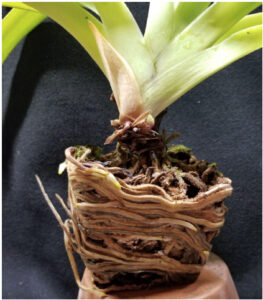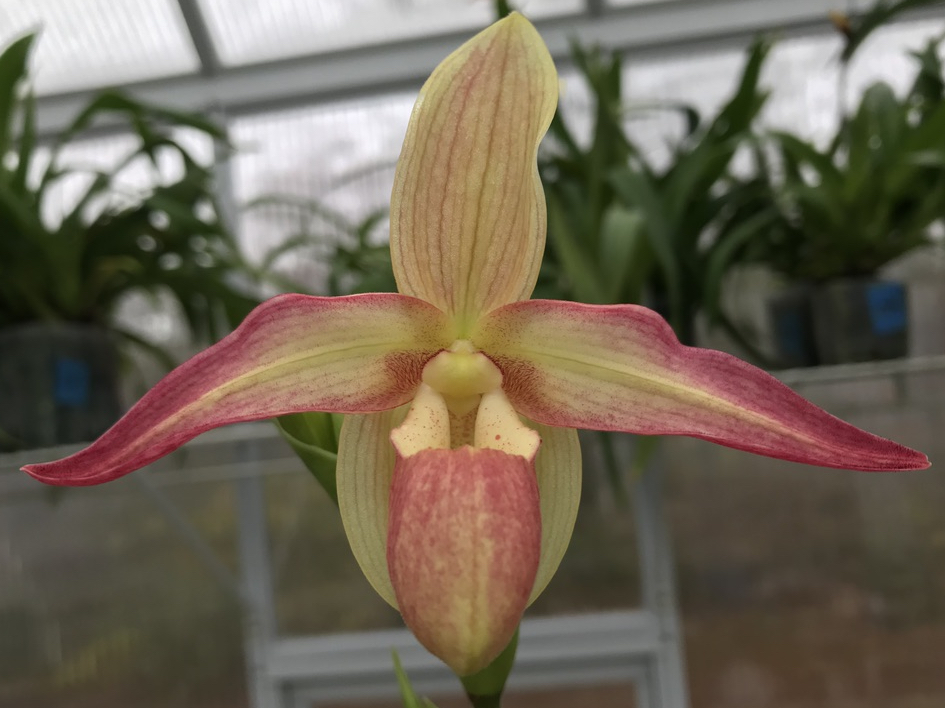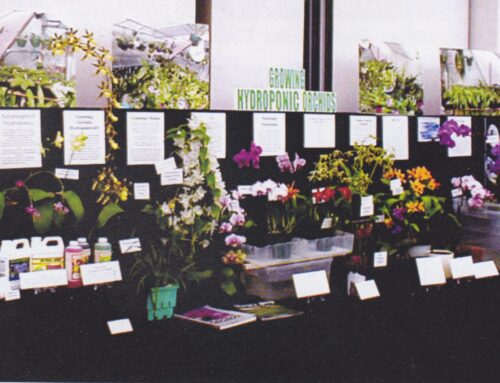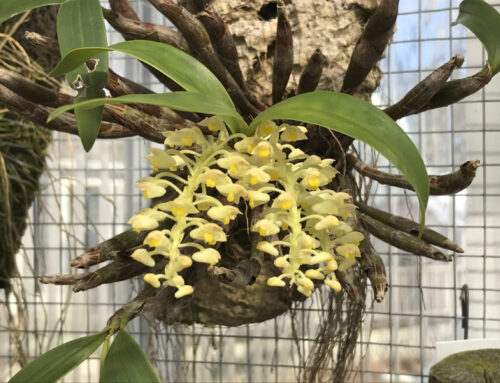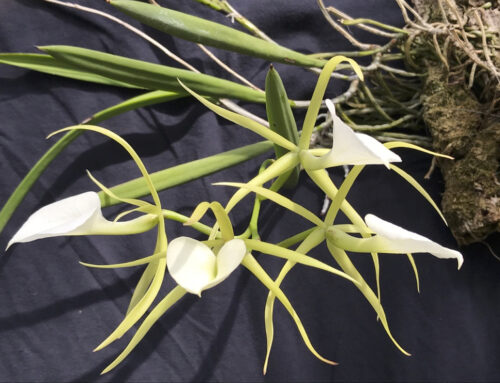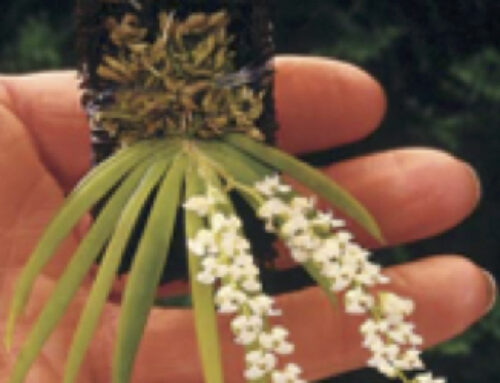By Millard Hennessee
This article is not meant to be a primer on repotting, rather it is my observations aimed at improving my culture after growing my favorite genera over the previous two years.
To set the stage, 1 ½ years ago I moved my orchid collection from a basement room growing under HID lighting to a new, updated, in-house growing area with state-of-the-art LED lighting. I also repotted most of my orchids in a mix that would reflect more accurately how I care for my plants. This included fine and medium fir bark, charcoal, growstone and Aliflor. I used clay and plastic pots, with and without small net pots in the center bottom of the pot so that I could better evaluate the root growth under these conditions.
Eighteen months after this initial move, I began the repotting, knowing I should be repotting the orchids every year and that life gets in the way. I attempted to observe which pot types and the presence/absence of small net pots proved best under my conditions, so that I could adjust my potting mix and technique with the goal of improving growth and flowering potential. This article concentrates on Phragmipedium’s, because this is the genera that I experimented with the most. I was nervous about repotting them at this time, as a number of them are in spike and/or blooming, but the articles I read and blogs I follow said not to overly worry. Besides, I had the time now. Some random observations first: Repotting in your basement creates an unbelievable mess; When you think you have enough repotting mix prepared, you do not; Wet repotting media is extremely heavy; Now is the perfect time to remove dead plant material from your plants, but be aware that new growths are at the base of the pseudobulbs so be extremely careful; It is a great time to observe for any pests or diseases, as you are handling each plant.
My individual observations of plants reflect that a plant repotted 2 ½ years ago rather than 1 ½ years ago results in more dirt than bark at the central interior portion of the pot. There was no root growth in this area and the roots surrounding this rotted media were not as robust as those repotted 1½ years ago. Clay pots produced roots throughout the media, but they were generally small in diameter. This was observed across several hybrids. Roots located at the bottom of the pot were dryer than higher in the pot. The roots were not firmly adhered to the side of the pot. Pots with small net pots in the center bottom of the pot produced the greatest number of roots with larger diameter and showed minimal root rot. Roots did not penetrate the interior of the net pots
Plastic pots produced larger, and an increased number of roots throughout the interior of the pot. However, the central portion of the pot produced a great number of dead roots and the potting media was the most degraded. Net pots in the central portion of the pots reduced the number of dead roots and degraded media. No roots penetrated the interior of the net pot. Roots were firmly adhered to the sides of the pots in all instances and these were not pried loose when repotting.
My conclusions for growing Phragmipediums in the future in my basement under LED lighting in my present mix, with my present care are to repot them in less than 2 years’ time. This minimizes degradation of the media. Air at the roots is imperative for better root growth. Using net pots in plastic pots or air-cone pots will maximize the amount of air getting to the central portion of the root mass. With my watering regimen, plastic pots are more conducive to better root growth than clay pots, as clay pots result in more rapid evaporative drying, not one of the Phragmipediums’ cultural requirements. So, for now, I will be repotting in plastic pots with a net pod in the central portion of the pot or using air cone pots. I will be repotting in 1-year and plan to reevaluate this portion of my culture at that time.
